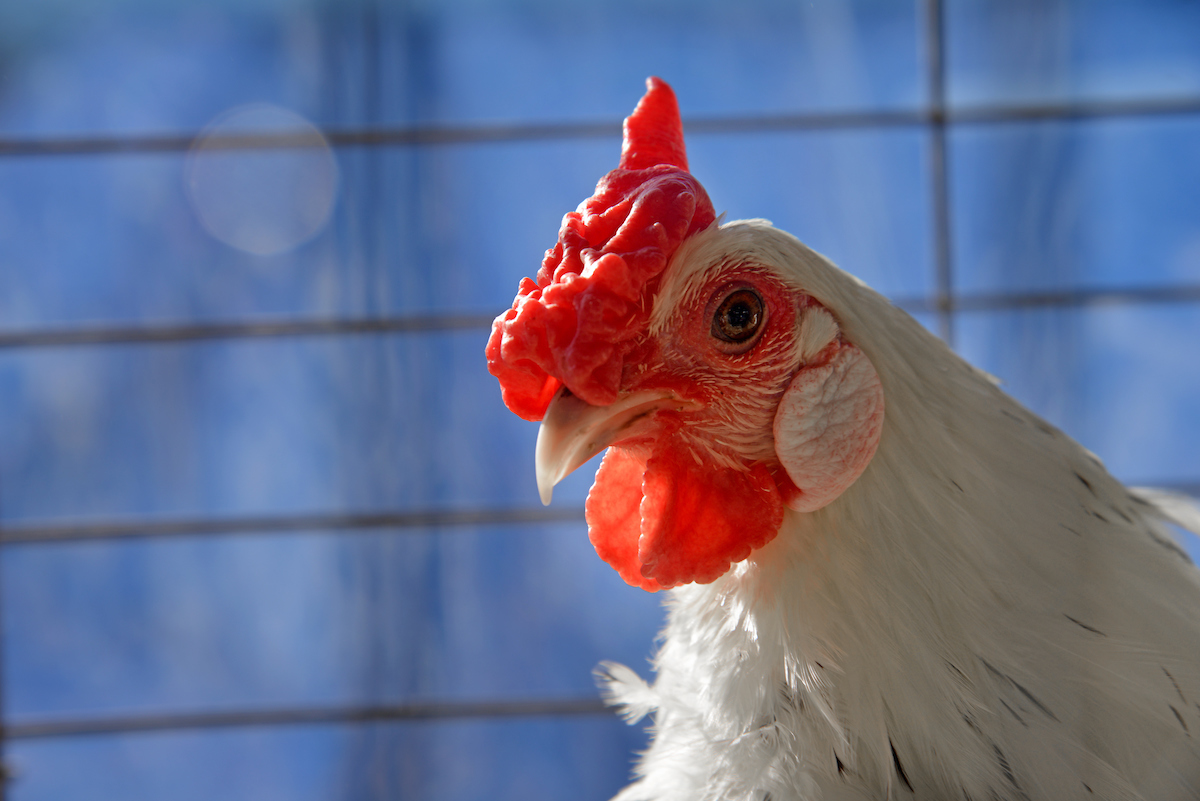Enterococcus Co-Infection Makes Colibacillosis Deadlier in Poultry

For Immediate Release
Researchers from North Carolina State University have found that when a particular strain of Enterococcus is found alongside E. coli in cases of avian colibacillosis, there is a higher rate of fatality than when the infection is caused by E. coli alone. The findings could have implications for the billion-dollar U.S. poultry industry.
Avian colibacillosis is an infection caused by a strain of E. coli called avian pathogenic E. coli (APEC). Specifically adapted to birds, it can cause septicemia, organ failure and death. The infection is estimated to cost the U.S. poultry industry millions of dollars a year in losses.
“The way we rear poultry can create a perfect storm of colibacillosis,” says Grayson Walker, a combined DVM and Ph.D. student in Dr. Luke Borst’s laboratory at NC State’s College of Veterinary Medicine and first author of the study. “If one egg in a hatchery is contaminated, it could spread to an entire farm.”
Walker and his colleagues observed six poultry flocks – three chicken flocks and three turkey flocks – for over a three-year period, taking post-mortem samples from birds suspected to have colibacillosis and culturing them to see which bacteria were present. They cultured both Enterococcus faecalis (EF) bacteria and APEC from many of the samples, and wanted to find out whether the presence of both bacteria increased mortality rates in birds. Enterococcus species are normally present in the gastrointestinal tracts of birds, but some strains – such as EF – have recently been associated with more serious infections in birds.
“Given the prevalence of co-isolated pathogens in post-mortem samples, we hypothesized that co-infections are more likely to result in death of the animal compared to single-species infections from which birds may be more likely to recover,” says Walker.
The researchers created an embryo infection model, in which embryos were exposed to just EF, just APEC, or both. The researchers found that co-infection with both APEC and EF resulted in a 95% mortality rate, which was three times higher than that caused by EF alone (32%) and substantially more than APEC alone (59%).
“This is a preliminary study,” says Walker. “Our next steps will involve looking more closely at synergies between these pathogens in colibacillosis. But we do know that all poultry are affected by this disease, it’s expensive for the industry, and Enterococcus could be playing a previously unknown role in its progression.”
The study appears in Avian Pathology, and was supported in part by the National Institutes of Health. Luke Borst, associate professor of veterinary anatomic pathology, is corresponding author. Siddhartha Thakur, professor of population health and pathobiology, veterinary residents Sesny Gall and Laura Chen, and research specialist Mitsu Suyemoto also contributed to the work.
-peake-
Note to editors: An abstract follows.
“The role of Enterococcus faecalis during co-infection with avian pathogenic Escherichia coli in avian colibacillosis”
DOI: 10.1080/03079457.2020.1796926
Authors: Grayson K. Walker , M. Mitsu Suyemoto, Sesny Gall, Laura Chen, Siddhartha Thakur and Luke B. Borst, North Carolina State University
Published: Online Sept. 7, 2020 in Avian Pathology
Abstract:
Enterococcus spp. (ENT) are frequently co-isolated with avian pathogenic E. coli (APEC) from poultry with colibacillosis, a leading cause of flock mortality. Although largely overlooked, ENT may play an active role in these infections. To assess the frequency of ENT co-isolation in colibacillosis, cultures were collected from birds with gross lesions of omphalitis, polyserositis, and septicaemia over a 3-year period from three turkey flocks and three broiler flocks. In birds diagnosed with colibacillosis based on gross findings and isolation of E. coli, ENT were co-isolated with APEC in 35.7% (n = 41/115) of colibacillosis mortality and 3.7% of total mortality (n = 41/1122). Co-isolated APEC and ENT pairs (n = 41) were further characterized using antimicrobial resistance phenotyping and in vitro co-culture assays. E. faecalis (EF) was the most commonly co-isolated species (68% = 28/41) and tetracycline resistance was the resistance phenotype most commonly found among APEC (51% n = 21/41) and ENT (93% n = 38/41). Under iron- restricted conditions, EF enhanced APEC growth in a proximity-dependent manner and APEC grown in mixed culture with EF exhibited a significant growth and survival advantage (P ≤ 0.01). In an embryo lethality assay, APEC coinfection with EF resulted in decreased survival of broiler embryos compared to monoinfections (P ≤ 0.05). These data demonstrate that EF augmented APEC survival and growth under iron limiting conditions, possibly translating to the increased virulence of APEC in broiler embryos. Thus, ENT co-infections may be a previously unrecognized contributor to colibacillosis-related mortality. Further investigations into the mechanism of this interaction are warranted.
- Categories:


